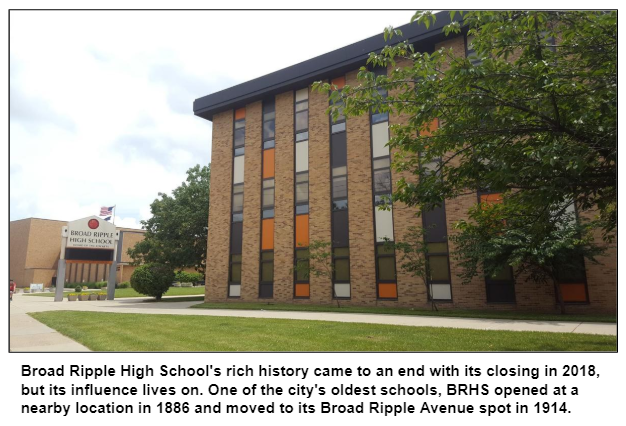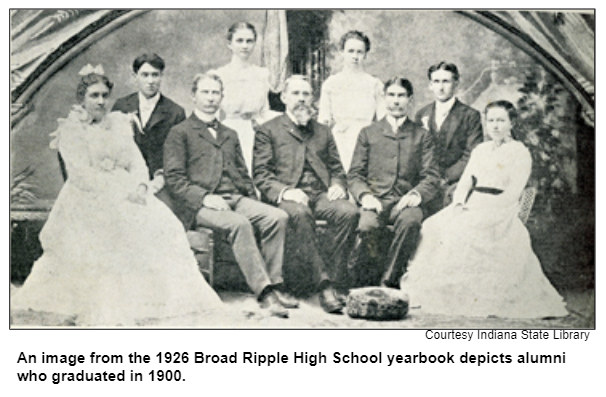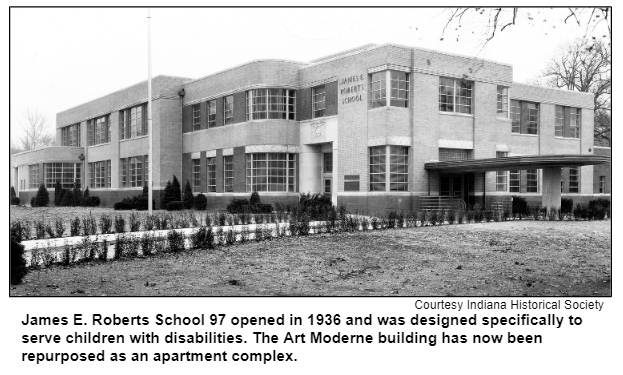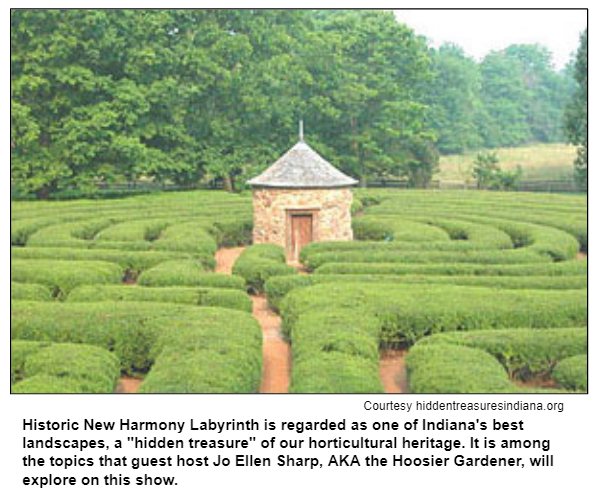
Saturdays, noon to 1 p.m. ET on WICR 88.7 FM.
Or listen live from anywhere on WICR Online!
Our call-in number during the show: (317) 788-3314
Sorry, podcast not available due to technical problems.
July 20, 2019
Broad Ripple High School history

But there's no questioning the high school has a rich history that sometimes seems to have changed course with the speed of a Rocket, which was adopted as the school's mascot in the early 1930s, according to the Broad Ripple High School Alumni Association.
It was considered a "rural" high school - located in the village of Broad Ripple - when Broad Ripple High opened in 1886 with seven students in a building that also was being used as an elementary school.
It became part of the Indianapolis Public Schools system in 1923 (one year after the village was annexed into the city) and has a roster of notable alumni including David Letterman (class of '65); attorney Marilyn Tucker Quayle (class of '67), the nation's second lady as the wife of former Vice President Dan Quayle, and George Hill (class of 2004), the current NBA player for the Cleveland Cavaliers.
Hoosier History Live will take a glance at the lives of these alumni as we explore how their alma mater evolved from rural to suburban to urban over the years, with plenty of triumphs and challenges along the way. BRHS milestones have included a state high school basketball championship in 1980; court-ordered integration in the 1970s; designation as an Arts and Humanities magnet school; and dwindling enrollment after reaching a peak of 2,500 students in 1995 because of the closings then of other IPS high schools.
Nelson's studio guests will include three alums of Broad Ripple High:
- Alice Ashby Roettger (class of '52), a Broad Ripple historian who has lived in the area most of her life. Members of her family attended the high school for a span of more than 50 years, extending from the1930s (an older sibling was in the class of '39) to 1988, with the graduation of the youngest of her four daughters, all of whom attended Broad Ripple.
- Bruce Buchanan (class of '73), CEO of Buchanan Group Inc./Flanner and Buchanan Funeral Centers and a civic leader. Bruce, who was a member of the high school's state championship tennis team in 1973, is currently involved in an effort to ensure that the school's archives, keepsakes and other artifacts are protected and not dispersed, which has been the fate at some other local high schools that have been closed.
- And Sandy Sisson Fenstermaker (class of '54), who periodically coached track, golf and swimming and was a substitute teacher at her alma mater. Sandy, who continues to live in the Broad Ripple area, is the mother of five graduates of the high school. Six of her grandchildren also have graduated or attended Broad Ripple.
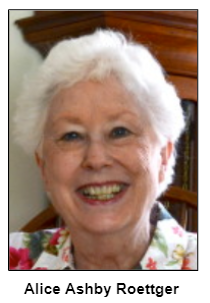
What we know today as Broad Ripple High school consists of a series of additions to the1914 structure, which was itself demolished in 1968. That demolition and reconfiguration project made navigating the school's hallways easier, but getting from one side of the building to the other could still be a circuitous challenge.
Before that demolition, students included Michael Graves (class of '52), an internationally acclaimed architect whose hometown projects included the Indianapolis Art Center near his alma mater; John Mutz (class of '53), former lieutenant governor of Indiana; and former Indianapolis Mayor Steve Goldsmith (class of '64).

According to an article published in Indianapolis Monthly after the school's closing, BRHS during its final year was attended by "just 25 percent of the number of students it was designed to accommodate." The final graduating class consisted of about 130 students.
Some other BRHS history facts:
- A cow pasture south of the school became its football field in 1928. The parents of an alum killed during World War II donated funds to make Broad Ripple the first IPS school with a lighted football field, according to the alumni association.
- In 1970, the high school was overseen by a black principal, William Jones, for the first time.
- Our guest Bruce Buchanan wrote for The Riparian, the school's newspaper, which, along with the yearbook, won several national awards in the decades following their debuts during the 1920s. Other Riparian staffers included David Letterman's younger sister, Gretchen Letterman, who has enjoyed a long career as a newspaper editor based in St. Petersburg, Fla.
Roadtrip: James E. Roberts School 97 on Indy's near eastside
Guest Roadtripper Suzanne Stanis of Indiana Landmarks suggests a visit to Roberts School Flats on East 10th Street in Indianapolis. The apartment building is a great example of "adaptive reuse," a process by which historic buildings are given a second life by modifying them to serve a new purpose.
Suzanne tells us that Robert School Flats is part of a larger trend to turn former schools into contemporary living places that appeal to urban dwellers. "Wide corridors, spacious rooms, and ample natural light make historic school buildings a popular housing option," she says.
The project adds to the growing revitalization of East 10th Street and preserves an important landmark for the disabled community. Constructed as a WPA project, the building opened as the first state-of-the-art facility for physically disabled children in 1936. Noted local architects McGuire & Shook designed the two-story school with ramps, a hydrotherapy pool, elevator and sun deck.
To hear the story of how the historic building was almost lost but then saved with the help of Indiana Landmarks and a $3 million rehabilitation by Core Redevelopment, be sure to join us for this fascinating Roadtrip!
History Mystery
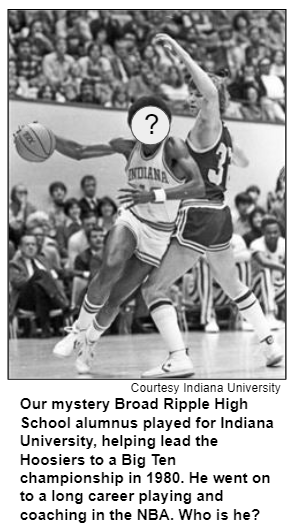
After graduating from Broad Ripple, he achieved success at Indiana University playing for coach Bobby Knight and helping lead the Hoosiers to a Big Ten championship in 1980. Later that year, he began his NBA career when he was drafted by the New York Knicks.
After more than a decade as a player for various teams, he served as coach or assistant coach for several NBA teams. From 2004 to 2010, he was the head coach of the Atlanta Hawks, which made the NBA playoffs in each of his final three seasons.
Question: who is the member of Broad Ripple High's class of 1976 who has enjoyed a long career in the NBA?
Please do not call in to the show until you hear Nelson pose the question on the air, and please do not try to win if you have won any other prize on WICR during the last two months. You must be willing to give your first name to our engineer, you must answer the question correctly on the air and you must be willing to give your mailing address to our engineer so we can mail the prize pack to you.
The prizes this week are four tickets to the James Whitcomb Riley Museum Home in Indianapolis, courtesy of the museum, and a gift certificate to Story Inn in Brown County, courtesy of Story Inn.
Getting into the flow of White River history
Nelson Price, host and historian
Molly Head, producer/project manager, (317) 927-9101
Michael Armbruster, associate producer
Cheryl Lamb, administrative manager
Richard Sullivan, senior tech consultant
Pam Fraizer, graphic designer
Garry Chilluffo, special events consultant
Please tell our sponsors that you appreciate their support!

 Acknowledgments to Monomedia, Visit Indy, WICR-FM, Fraizer Designs, Heritage Photo & Research Services, Henri Pensis, Aaron Duvall, Chloe Tyson, and many other individuals and organizations. We are independently produced and are self-supporting through organizational sponsorship and through individual contribution at the yellow button on our newsletter or website. For organizational sponsorship, which includes logos, links, and voiced credits in the show, contact Molly Head at (317) 927-9101 or email her at molly@hoosierhistorylive.org. Our media reach continues to grow via podcasting and iTunes.
Acknowledgments to Monomedia, Visit Indy, WICR-FM, Fraizer Designs, Heritage Photo & Research Services, Henri Pensis, Aaron Duvall, Chloe Tyson, and many other individuals and organizations. We are independently produced and are self-supporting through organizational sponsorship and through individual contribution at the yellow button on our newsletter or website. For organizational sponsorship, which includes logos, links, and voiced credits in the show, contact Molly Head at (317) 927-9101 or email her at molly@hoosierhistorylive.org. Our media reach continues to grow via podcasting and iTunes.
Thank you!
We'd like to thank the following recent, new and renewal contributors whose donations help make this show possible!
- Perry and Melanie Hammock
- Jim and Bonnie Carter
- Barbara and Michael Homoya
- Noraleen Young
- Barbara Wellnitz
- Phil and Pam Brooks
- Russ Pulliam
- Roz Wolen
- Marion Wolen
- Richard Vonnegut
- Robin Jarrett
July 27, 2019 - coming up
Hoosier horticultural heritage

First stop on Jo Ellen's tour of Indiana's garden history: Zionsville. Turns out that the historic village (now a booming suburb of Indianapolis) played an important role in the development and marketing of flowers for use in home gardens.
Nearly a century ago, Zionsville gained the nickname "Dahlia City," thanks to the success of two neighboring nurseries located in the village. Both produced not only dahlia tubers, but other showy flowers as well, which they sold locally and across the country through mail-order catalogs.
Zionsville became known as one of the best places to purchase tubers to produce colorful, spectacular blooms.
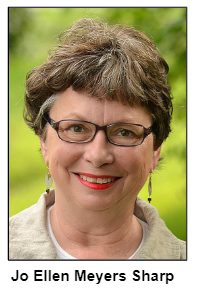

Some of Zionsville's floral legacy has been sadly lost: it appears the dahlia variety Zion's Pride is no longer available in the trade. However, town officials recently named a new road on the south side of town Dahlia Drive to recognize this colorful aspect of the village's history.
Also joining Jo Ellen in studio: landscape architect David Gorden, co-owner of Mark M. Holeman Inc., landscape company.
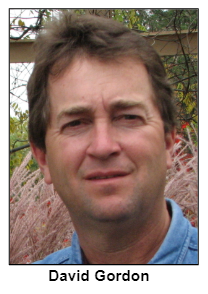
Within the boundaries of Indianapolis, garden lovers can revel in the beauty of Garfield Park, designed by George Kessler, and Oldfields, The estate garden designed by Percival Gallagher of the famed Olmsted Brothers landscape firm.
Yet another important historic garden to explore with Jo Ellen and her guests: the recently restored Riverdale estate landscape designed by Jens Jensen, now part of the campus of Marian University. The Friends of Riverdale raised $1.4 million to restore the century-old landscape that recently won an award from Indiana Landmarks. Riverdale also figures into Hoosier racing history: it is the former estate of James A. Allison, one of the founders of the Indianapolis Motor Speedway.
Also on the agenda for discussion: the value of native plants in Indiana gardens. There's growing interest in these plants as gardeners, urban planners, horticulturist, garden centers, nurseries and landscape architects learn more about the role of native perennials, trees and shrubs in sustainable gardens. A good example is public interest in milkweed, the only family of plants beloved monarch butterflies use to lay their eggs.
© 2019 Hoosier History Live. All rights reserved.
|
